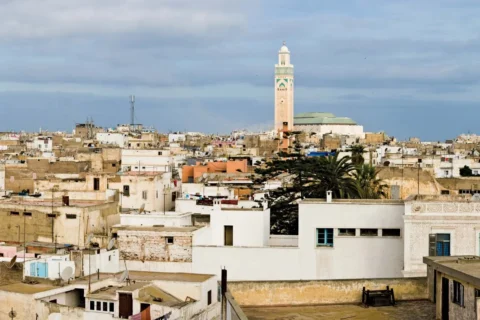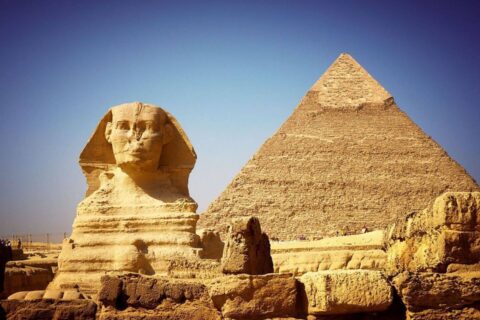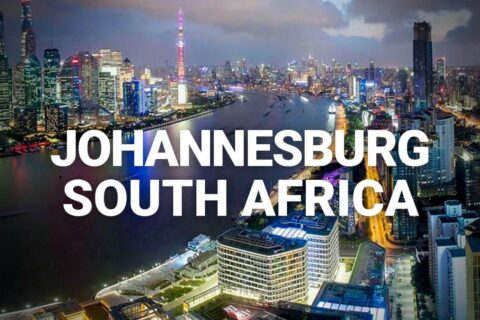Tokyo, Japan: A City of the Past, Present, and Future.
No book, tv show, movie, or documentary could prepare you for Tokyo. Whatever image you’ve conjured up in your vivid imagination from reading guidebooks, googling photos, or binge watching Lost In Translation, it will be a pitiful pastiche on the REAL Tokyo.
Every city you visit from now on, you’ll compare to Tokyo.
By population, Tokyo is the world’s largest city, where 38 million people within 5,000 square miles live.
Getting there: Tokyo is served by 2 international airports, Narita, which is 43 miles away from the city, and Haneda, which is WAY closer(8 miles). I flew into Narita because it was cheaper. A plethora of airlines fly there, including all 3 legacy carriers(American, United, and Delta), or you can fly Japan’s flagship carriers All Nippon Airways, or Japan Airlines. Having flown in from Bangkok, I flew Thai Airways(that’s for another post later).
Getting into town is easy. There are a lot of options to choose from since Tokyo doesn’t really have shuttles depending on your arrival point. From Narita, you can either take the limousine bus(which I did) for 3,100 yen(about 28 USD), the Narita Express(NEX) train for 2,940 yen(about 26 USD). the Skyliner train which runs from the airport to Ueno Station near the University of Tokyo for 2,400 yen(about 22 USD)
Money: Japan uses their own currency called the yen. The current exchange rate is 88 cents to 1 yen. Coins range from 1 to 500 yen, where notes take over from 1,000, 2,000, 5,000, and 10,000 yen denominations.
Despite being so technologically advanced, Tokyo is a VERY cash centric city. The chances of finding anywhere but airports that accept credit or debit cards are slim to none, so keep that in mind. Speaking of cash, ATMs in Tokyo are weird. They close as early as 8 p.m(some, not all), and most won’t let you withdraw less than 10,000 yen(about 88 USD). If you need cash after hours, look for a 7-11. They won’t be hard to find because they’re literally on every other corner in Tokyo, and they’re open 24 hours.
A pint of beer is about 500 yen. A coffee is about 300 yen. A big mac is about 700 yen. A bowl of ramen is about 800 yen.
What to see and do:
Shibuya: home to the world’s busiest pedestrian intersection(locals call it “the scramble”), Shibuya has a mind of it’s own. If you want an ariel view of the intersection, there is a Starbucks at one of the crossing points, go to the second floor, and be prepared to be amazed at the sheer amount of people and cars moving all at once in unison. As many as 3,000 cross it at one time during peak hours! I made a timelapse of it. It’s unreal. Shibuya REALLY comes alive at night. It’s bursting with even more energy that its daytime counterpart. From nightclubs to shopping, Shibuya is AMAZING! On top of that, you’ll find a statue of Hachiko the dog, who went to Shibuya Station everyday to meet his master, a professor, returning from work. Although the professor died in 1925, Hachiko kept coming to the station until his own death 10 years later. The surrounding plaza is Tokyo’s most popular rendezvous point and is always crowded.
Shinjuku: if you ever wondered what Times Square on steroids would be like, go to Shinjuku. This area is LIT(literally at night). If you google stock images of Tokyo at night, Shinjuku will be your result. As soon as you get off the train at Shinjuku station(one of the world’s busiest railway stations), you can feel the vibe of awesomeness. Here you can find the Metropolitan government building, where you can go to the top observation deck for free for a birds eye view of Tokyo. East of the station is Kabukichō, Japan’s largest and wildest Red Light District. It’s a pretty interesting area to stroll around. Despite Japan having such a low crime rate, keep your guard up in the Red Light District.
Akihabara: Called Electric town, man…..this area is literally a MECCA of everything related to video games and anime. It’s literally the geek capital of the world. Whether you identify yourself as one or not, it’s still worth going to see.
If you’re a nerd like myself, you’re never going to want to leave. There are arcades on EVERY CORNER(called Taito Game Stations), a 7 story store called Animate Japan, which is FULL of anime and manga, maid cafes, electronic stores, and restaurants. Akihabara is literally a world of its own. Talk about sensory overload to the billionth degree.
If you want a blast from the past, there is a store in Akihabara called Super Patato. It’s in a renovated apartment building. Here, you’ll find the holy grail of video games from Super Nintendo Famikon, the original Playstation in It’s factory packaging, a wall full of every N64 game ever made, to a retro arcade upstairs. Holy shit that place took me back in time to where things were simple. If you want to see nerds having multiple orgasms, head to Akihabara.
Roppongi: home to fast cars, and cheap thrills, Roppongi is the party district of Tokyo. Despite the party scene, Roppongi is home to a lot of international cuisine and foreign embassies. The nightlife is popular among locals and foreigners alike. The down side is there are a TON of Nigerian men trying to harass you, and asking if you wanna see some titties(those who have been to Roppongi can back me up on this). It got old real quick. The good thing is that since Roppongi is so foreigner friendly, there a lot of places that speak English. It’s also a 20 min walk away from Tokyo Tower(the Japanese version of the Eiffel Tower)
Asakusa: (pronounced Uh-Sox-uh), this area has a very traditional Japanese atmosphere. Here you will find Tokyo’s oldest temple, the Senso-ji, as well as the Kaminarimon(Thunder gate). Asakusa has some amazing street food, as well as shopping. You can walk from Tokyo Skytree, or take the free Panda Bus from Skytree as well.
Pokemon Center. If you’re around my age, you more than likely grew up playing/watching Pokemon. This store is a Mecca for the avid Pokemon fan. From a wall full of plushies, to pokemon related shirts, candy, bags, and cups, this store will definitely flood your nostalgia gates. It’s located on the 4th floor of the Solomachi building adjacent to Tokyo Skytree
Tokyo Skytree: this is the tallest building in Japan, and the 2nd tallest structure in the world after the Burj Khalifa in Dubai. It’s a site to behold. I didn’t go to the top because you can get a free view of Tokyo from anywhere in the Solomachi building.
Food: aside from the typical staples of Ramen and sushi, Tokyo has a TON of international cuisines to choose from. Tokyo is home to more Michelin star restaurants than London and New York combined! I highly recommend the Ginza Aster Subaru, and the Coconoma Season Dining(located on the 1st floor of Hotel and Residence Roppongi Hotel S where I stayed). If you want some great Ramen, head to Kipposhi, adjacent to Tokyo Skytree.
Oh. And Kobe beef. Better than sex. Take my word for it.
Transport: Tokyo’s metro system is extremely efficient, but damn it’s confusing! Google maps will literally save your life trying to use the metro in Tokyo. As a tourist, the Yamanote line with be your friend. It goes in a loop to all of the tourist spots.
To make it more confusing, several different railway systems operate within Tokyo, like the JR East Network, 2 subway networks(Tokyo Metro and Toe subway line) and a ton of private lines. To add insult to injury, different systems appear on different route maps. Like I said, google maps will save your ass while trying to navigate the railway system.
The 2 subway lines mentioned above are owned by 2 different companies. You have to pay and pass through a ticket barrier BEFORE transferring. If you get a pasmo card, it’ll make transfers easy.
Plan your excursions accordingly because the trains stop running between midnight at 5 a.m.
If you need to take a taxi between midnight and 5 a.m, note that the fares increase by 20%.
The language barrier: the language barrier is ROUGH. Asking for directions is a disaster waiting to happen, so learn some navigational phrases, or just use google maps.
Breakfast in Japan is pretty non existent outside of hotel restaurants. Nothing opens until 11 a.m around the city.
DO NOT TIP IN JAPAN! It’s considered extremely rude. IT SHOULD NOT BE DONE. Why? It could be interpreted in a few different ways. For example, you got a level of service you didn’t expect, so you feel compelled to give more. Good service is considered part of what you pay for. So when you tip, you’re putting your server in an awkward position. Another way it could be interpreted is that you’re somehow better than your server. DO NOT TIP IN JAPAN!
One last thing: VENDING MACHINES. VENDING MACHINES EVERYWHERE!
Tokyo is now in my top 3 places I’ve been. It’s a hyper modern city built on deep traditional roots. You can walk the streets of Tokyo and see the future being defined right in front of you, and of you walk down another street, you’ll see practices that haven’t changed in over a thousand years
I hope this guide helps for your trip to Tokyo. If I missed something, PLEASE feel free to comment, and feel free to message me with any questions 🙂
Arigatou gozaimasu!





